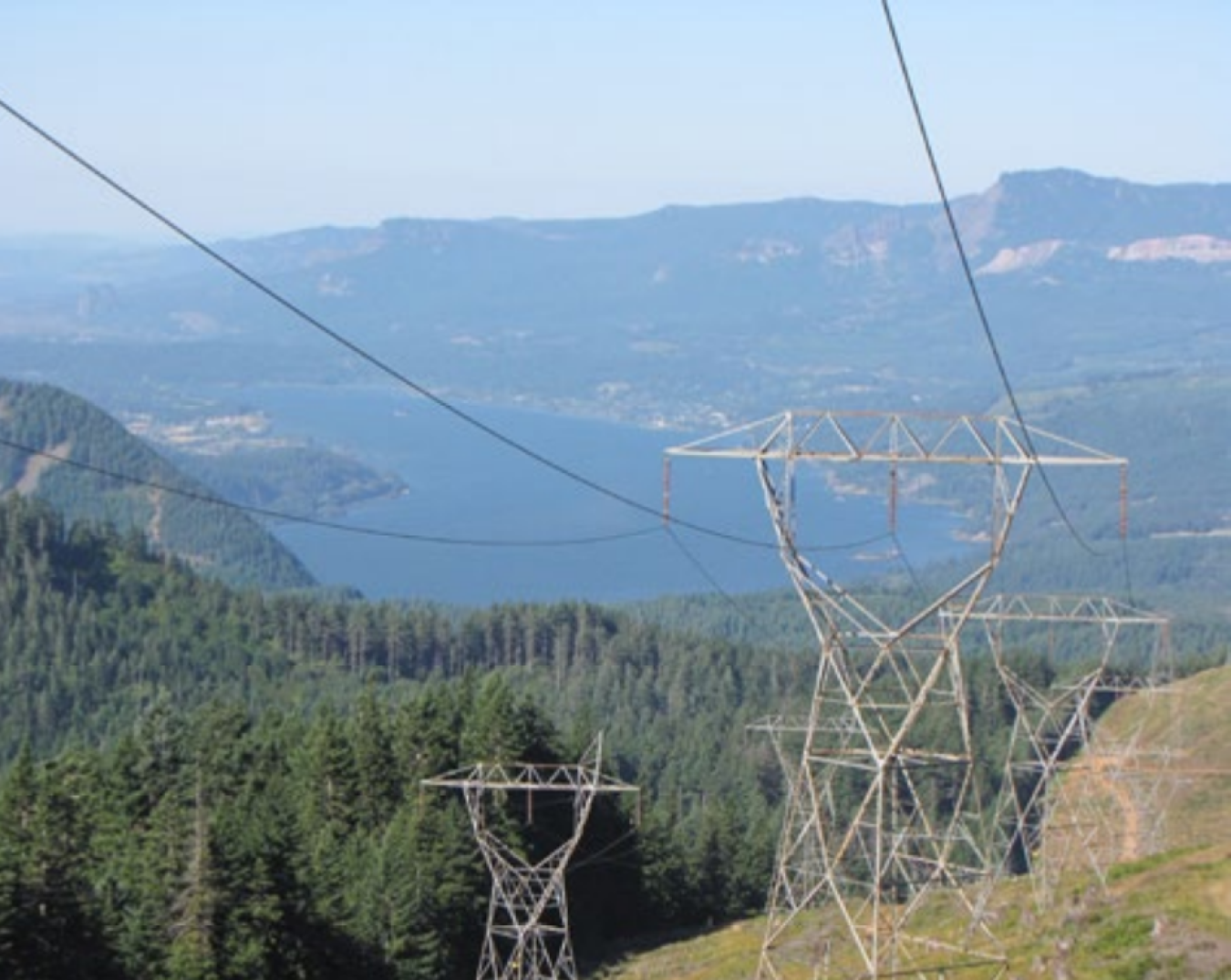Participation in a regional team advances infrastructure projects by streamlining permitting, environmental consultation, and regulatory compliance.
Office of NEPA Policy and Compliance
December 2, 2013
A linear infrastructure project, such as a transmission line, has the potential to affect many types of environmental, historic, and cultural resources.
By David Kennedy, NEPA and Policy Planning Supervisor, Bonneville Power Administration
Bonneville Power Administration (BPA) participates in the Pacific Northwest Regional Infrastructure Team (PNWRIT), a regional partnership established in May 2013 to advance infrastructure projects that “spur job creation in communities, further energy independence for national security, manage climate change risk, and build and upgrade necessary infrastructure to support the Nation’s economy, while ensuring environmental and natural resource stewardship.”
PNWRIT’s goals are to streamline permitting, environmental consultations, and regulatory compliance by coordinating issues for which multiple federal and state agencies have responsibilities – including reviews under the National Historic Preservation Act and Endangered Species Act (which typically must be completed prior to finishing a NEPA review). PNWRIT also serves as a forum for innovation in strategies and technologies that support integrated permitting.
PNWRIT focuses on renewable energy generation, electricity transmission, broadband, pipelines, ports and waterways, and water resource development projects. It was established in the spirit of Executive Order 13604, Improving Performance of Federal Permitting and Review of Infrastructure Projects (77 FR 18887; March 28, 2012).
Steering Committee and Strike Teams
PNWRIT’s Steering Committee consists of the Region 1 Director of the U.S. Fish and Wildlife Service, the Oregon/ Washington and Idaho State Directors of the Bureau of Land Management, and representatives of the Governors of Oregon, Washington, and Idaho. Additional PNWRIT participating agencies are the Bureau of Reclamation, USDA Forest Service, National Marine Fisheries Service, U.S. Army Corps of Engineers, and the Environmental Protection Agency, as well as BPA.
PNWRIT proposes to facilitate and troubleshoot priority projects through “Strike Teams” comprised of state and federal agency officials with decisionmaking authority for permits, reviews, and consultations. A Strike Team will develop joint permitting milestones, coordinate consultations, and address challenges to infrastructure development (text box, next page). A principal strategy for expedited permitting and consultation is expected to be the early identification of potential siting conflicts and mitigation measures.
As of late 2013, five BPA proposals (more than for any other agency) are PNWRIT priority projects:
- Two proposed new transmission lines that BPA is evaluating in EISs: I-5 Corridor Reinforcement Project, Oregon and Washington (DOE/EIS-0436) and Hooper Springs Transmission Project, Idaho (DOE/EIS-0451)
- The proposed rebuilding of three transmission line segments that BPA is evaluating in EAs: AlveyFairview Transmission Line Rebuild, Oregon (DOE/EA-1891), Lane-Wendson Transmission Line Rebuild, Oregon (DOE/EA-1952), and Hills CreekLookout Point Transmission Line Rebuild, Oregon (DOE/EA-1967)
Lydia Grimm, Manager for Environmental Planning and Analysis, is one of BPA’s representatives participating in the PNWRIT effort. Although the Team focus is not primarily on NEPA compliance, the availability of the PNWRIT forum for discussing a major resource issue, for example, will help BPA in developing quality environmental analyses quickly and effectively.
Substantive Benefits Anticipated
BPA expects substantive benefits from PNWRIT’s identification of cross-agency and cross-jurisdictional mitigation opportunities. PNWRIT has a stated priority of providing ecologically effective mitigation strategies for species or natural resources at a watershed- or ecosystem-level. Such strategies include conservation banking (offsite mitigation through permanently protected lands that contain natural resource values), reinforcing a mitigation hierarchy (avoid, minimize, then mitigate), fulfilling species recovery plans, and integrating multiple agency efforts in conserving the same or similar resources. As it gains experience, PNWRIT intends to develop a lessons learned program that will include regional workshops. For more information, please contact me at dkkennedy@bpa.gov or 503-230-3769.
BPA expects the state and federal interagency coordination facilitated by PNWRIT to expedite NEPA analysis and compliance for these projects and create more holistic planning and mitigation. When agencies commit to permitting and review as a team, we are more likely to understand key issues early and be able to address them quickly. This will allow BPA to keep on its critical time schedules for infrastructure projects, and create better opportunities with our state and federal partners for meaningful and strategic mitigation of potential impacts. – Lydia Grimm, BPA
Challenges to Infrastructure Permitting
Through initial analysis and stakeholder outreach, PNWRIT has identified potential obstacles to expediting infrastructure planning and implementation (Plan for Implementation, September 30, 2013, pages 10–11), and aims to address them through its Steering Committee and Strike Team activities.
- Contrasting agency requirements, expectations, and approaches for environmental or regulatory review and analysis.
- Competing demands for finite staff resources, loss of institutional knowledge, and limits on travel.
- Adhering to a project schedule for multi-year projects involving the public and multiple agencies with distinct missions, procedures, and processes; need for staff with expertise in project management and procurement.
- Uncertainty in decisionmaking authority within or among agencies; application of new policies to an ongoing project; differences of judgment in review and analysis.
- Synchronizing into an overall critical path those activities that some agencies conduct sequentially because of specific requirements, timeframes, and standards.
- Differences among agencies in data collection and survey methods, standards, and approaches to sharing and protecting sensitive or proprietary information.

